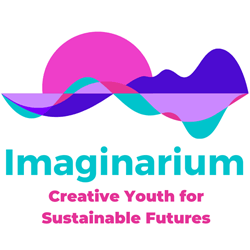- Activity
What is a Thincathon? It is a hackathon without hacking and coding, it is rather about thinking and designing new ideas for their future and the futures of their communities. So maybe you have already discussed with young people their visions for the future and you assumed that it is time to stop talking and start doing!
Many dark narratives are being created and even if the situation is for sure dramatic, some young people are feeling overwhelmed and are losing the belief in being able to create change by themselves. In this situation the citizens, entrepreneurs, teachers but especially young people need to be assisted with different ways of thinking where creativity and creative problem solving plays a central role. We need to revive the imagination of young people for inventing positive future scenarios as well as support their creative courage to be able to be the protagonists of the imagined future. How to proceed?
Setting:
1-day Thinkathon is a co-creation workshop where young people work in small groups (max 6 persons) on the current global challenges and their impact on local communities.
The groups should be seated around the tables, each having a flip chart board at their disposal.
The instructions should be projected on the screen, the head facilitator might use the microphone, clicker and measure the time with the large clock projected on the screen.
This is the suggested program:
08:00 Welcome speech and introduction to the Thinkathon
08:15 Warm up game for the groups: creativity battle
08:30 Group work: reveal of the challenge: what do we already know? Mind map
Example of challenges (based on SDG’s)
|
09:00 Let’s understand our users: persona profile and interviews
10:00 Let’s generate ideas! 3 activities
10:45 Let’s build our ideas! Small group work: prototyping (storyboard and 3D)
11:40 Break for lunch
12:35 Plenary presentations of the prototypes and feedback
14:00 Closing words
The Thincathon is a chance for young people to take part in a creative process and learn about their creative competences. They will experience their own creativity as well as the group work that can inspire their ideas about desired future.
Here are examples of debriefing questions:
- Are you satisfied with the final idea that you have build in the group?
- Do you think that the idea is feasible: can be implemented in reality?
- Would you like to be part of building this particular image of the future? What would be your role (spectator or player?)
- Who would be key players to implement that vision: can you imagine to contact them to show them the prototype?
- Have you discovered something new about yourself?
- What was the WOW moment in the whole day?
4h -5h
- 1 flip chart board per group with flip chart papers
- Markers and pencils x 6 per group
- 2 decks of post-its per table
- Sticky tape (x 1 per table)
- Sticky dots (x 1 per table)
- A4 paper (x 20 per table)
- Set of Templates from Annex
In the project Thinkathon, we are going to introduce creativity using Design Thinking and Futures Thinking methodology. By “teaching” the future, you can engage young people in thinking and projects that motivate them to learn, equip them to face uncertainty and challenge, empower them to envision a preferred future, and develop agency to bring it about. Therefore “futures thinking” competence is becoming a necessity today, and not just an interesting intellectual exercise.
Young people will be ensured that designing the future is, on the one hand, a search for opportunities and potential, and on the other hand, systematic, purposeful and initiating practical solutions, aimed at responding to uncertainty.






